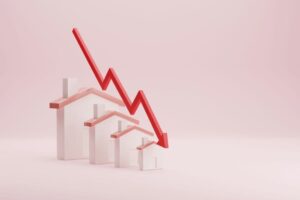Ahead of IFA Magazine’s celebratory coverage of International Women’s Day tomorrow, we thought this detailed research from the abrdn Research Institute flagged up some important information for investors. Not only does it lift the lid on 29 different countries’ gender equality and whether or not it is improving but also offers real insight into the role of women in work and the impact of the Covid pandemic.
What exactly is abrdn Research Institute’s Gender Equality Index?
The abrdn Research Institute (aRI) has an annual Gender Equality Index that ranks and scores 29 developed countries across a wide range of economic, policy and ‘empowerment’ factors. The index scores countries out of 100 based on specific measures that show: the current economic situation for women, the policies in place to support equality, plus an ‘empowerment’ score that measures how much business and political opportunity and involvement there is for women.
The index is designed to aid investment decision-making based on a country’s gender equality, and whether or not it is improving; it highlights the different reasons for inequality between countries and pinpoints how equality can be bettered in ways that are appropriate for each individual nation.
The index ranks and scores 29 developed countries across a wide range of economic, policy and ‘empowerment’ factors, and surprising information about the continuing inequality between the sexes has been revealed.
The index takes three particular areas into account in the scoring: the economic macro fundamentals of every country, the policies concerning gender equality, and an ‘empowerment’ scoring system.
The macro fundamentals are six important indicators that include: women’s participation in the workforce, female education, and the gap between the share of women and men in part-time working, unemployment and self-employment. To measure policies, aRI looked at seven areas including: maternity and paternity leave, the tax burden on parents, both single and married, employment protection and childcare costs for both single and married parents.
For empowerment, which is more of a cultural measurement, there are four indicators: involvement and representation in politics, access to state jobs and business opportunities, plus the protection in place for pay and work equality.
The latest data is in
Due to the complexity of the analysis, the most recent numbers cover the period of 2020-2021 and though none of the results are surprising, this allows us to look at the data that backs up the assumption that the Covid pandemic hit women worst.
The latest data (2020-2021) revealed that:
1. Women’s participation remains below the pre-pandemic trend. Moreover, those women who did not leave the labour market entirely were more likely to be unemployed than their male counterparts. Typically during a recession, male unemployment rates rise more than
female, but this wasn’t the case during the pandemic, with women’s unemployment rates on average remaining above men’s. Sectors in which women are overrepresented suffered more job losses, and depending on the policy response used by governments through the pandemic, more women on average dropped out of the labour force.
2. Women’s working hours fell by more than men’s in the initial wave of the pandemic – the average working hours for women in OECD countries declined by 16.4% compared to a 14.9% drop for men. In addition to structural causes, disproportionately increasing caring responsibilities made women more likely to reduce hours or drop out of the labour force. In Europe, working women are 50% more likely than working men to regularly care for ill, disabled, or elderly adult relatives. The vulnerability of the older population to Covid increased these caring responsibilities.
3. Scandinavian economies continue to hold on to the top positions in the index. Sweden moved to the top of the index, followed by Denmark. Norway slipped to 3rd place, due to a slower recovery in female participation after the pandemic, whilst Finland’s position in 4th place remains unchanged.
4. The biggest recorded change was Iceland, which dropped 4 places to 13th. This was driven by macro factors, such as the widening of the unemployment gap with a higher female unemployment rate than male and a decline in the female participation rate.
5. Japan slipped to the bottom position, swapping places with Korea, recording a decline in its empowerment score. This was caused by limited access to state business and job opportunities for women. There have been no other changes for those below the 23rd position in recent years.
6. The UK moved up one place, ranking 21st, with the largest positive change in its empowerment score, due to a combination of improved access to state job opportunities for women and increased political empowerment.
7. Spain moved up one place ranking 12th , due to policy improvements, with the increase in paternity leave to match that of maternity at 16 weeks. This gives Spanish fathers access to an additional four weeks of paternity leave.
Abigail Watt, Research Economist, abrdn, said: “Our Gender Equality Index was created to help our investment teams understand country-specific trends in gender equality, and it has provided a way for us to assess how gender equality has changed through the pandemic across OECD countries. We know that there isn’t just an ethical argument for gender equality, but an economic one too, and as economies recover after the pandemic, tracking the recovery in women’s participation in the labour force is vital.
“The pandemic exacerbated the pre-existing disparity between men and women’s caring responsibilities, through a loss of childcare options and an increase in demand for elderly support.
However, men spending more time overall on childcare is encouraging – research shows that, after periods of parental leave, men’s participation in care remained elevated upon return to formal working. This can be capitalised on by policies around caregiving leave and increasing flexibility in the labour market. It is this kind of policy backing which is needed to address the unequal distribution of responsibilities and achieve longer-term equality in the labour market.”














